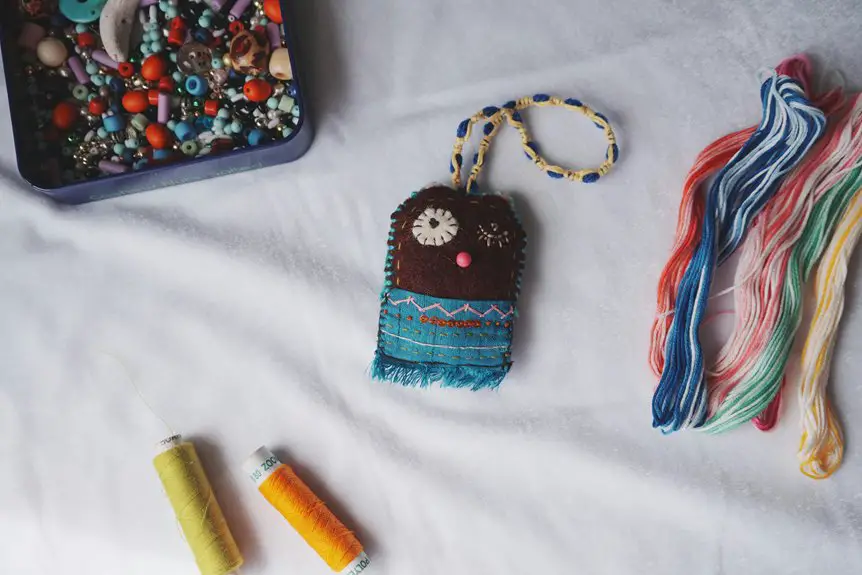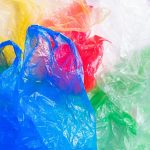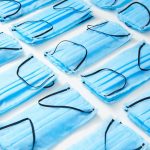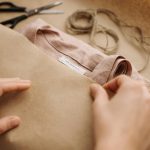Nonwoven polypropylene (PP) is a lightweight, durable fabric made by bonding polypropylene fibers without weaving. You’ll find it in everyday items like medical masks and reusable bags because it’s strong, moisture-resistant, breathable, and cost-effective. The fabric is made by extruding melted polypropylene into filaments, then bonding them into a web. It’s versatile and chemical-resistant, making it ideal for many uses. If you keep exploring, you’ll uncover how its manufacturing process and environmental impact influence its widespread popularity.
Table of Contents
Key Takeaways
- Nonwoven polypropylene (PP) is a durable, moisture-resistant fabric made by bonding polypropylene fibers without weaving.
- It is manufactured by melting polypropylene pellets, extruding filaments, forming a web, and bonding fibers mechanically, thermally, or chemically.
- PP fabric is lightweight, strong, breathable, chemical-resistant, and cost-effective, making it suitable for various applications.
- Common uses include medical masks, surgical gowns, reusable bags, agricultural covers, and filtration materials.
- While PP is petroleum-based and contributes to pollution if disposed improperly, it offers recyclability and potential for bio-based alternatives.
Understanding the Composition and Structure of Nonwoven Polypropylene
Although you mightn’t see it, nonwoven polypropylene fabric plays an essential role in many everyday products.
When you look closer, you’ll find it’s made from polypropylene, a type of plastic polymer known for its durability and resistance to moisture.
Unlike woven fabrics, nonwoven PP doesn’t rely on weaving or knitting. Instead, it’s formed by bonding fibers together through mechanical, thermal, or chemical means.
This structure creates a lightweight yet strong material with excellent breathability and filtration properties.
You’ll notice that its composition allows it to be both flexible and resilient, making it ideal for uses ranging from medical masks to reusable shopping bags.
Understanding this fabric’s makeup helps you appreciate why it’s so versatile and widely used.
The Manufacturing Process Behind PP Nonwoven Fabric
When you plunge into how nonwoven polypropylene fabric is made, you’ll see that the process combines advanced technology with efficiency to produce a versatile material. It starts with melting polypropylene pellets, which are then extruded through fine spinnerets to create continuous filaments. These filaments are laid down randomly or in a pattern on a conveyor belt, forming a web. Next, the web undergoes bonding—either by heat, pressure, or chemical means—to stabilize the fabric. Finally, the fabric is rolled and prepared for shipment.
| Step | Description |
|---|---|
| Extrusion | Melting pellets into filaments |
| Web Formation | Laying filaments into a web |
| Bonding | Stabilizing the web via heat or pressure |
Key Properties and Benefits of Nonwoven Polypropylene
Durability and versatility make nonwoven polypropylene fabric a popular choice across various industries. When you use this fabric, you benefit from its lightweight yet strong nature, which resists wear and tear effectively.
It’s moisture-resistant, so it won’t easily absorb liquids, keeping things dry and hygienic. Plus, it’s breathable, allowing air to pass through, enhancing comfort in applications like protective gear.
You’ll also appreciate its chemical resistance, as it withstands many solvents and acids without degrading. Nonwoven PP fabric is easy to clean and maintain, making it practical for repeated use.
Ultimately, it’s cost-effective and recyclable, so you can rely on it for economical and environmentally conscious solutions without sacrificing performance or quality.
Common Applications and Uses of PP Fabric
Since nonwoven polypropylene fabric combines strength and breathability, you’ll find it used in many everyday and industrial products.
When you encounter disposable face masks, you’re actually touching PP fabric, valued for its filtration and comfort. In the medical field, it’s a go-to for gowns and drapes, protecting both patients and healthcare workers.
Beyond healthcare, PP fabric plays a vital role in agriculture and packaging.
Here are some common uses you’ll recognize:
- Medical supplies like masks, gowns, and surgical drapes
- Agriculture covers that protect crops and control weeds
- Packaging materials including reusable grocery bags and protective wraps
PP fabric’s versatility makes it indispensable across various sectors, balancing durability with lightweight design.
Environmental Impact and Sustainability Considerations of PP Nonwovens
Although nonwoven polypropylene fabrics offer many benefits, their environmental impact raises important questions. You should know that PP is a petroleum-based plastic, which means its production relies on non-renewable resources and contributes to greenhouse gas emissions.
However, PP nonwovens are lightweight and durable, which can reduce waste compared to single-use alternatives. When disposed of improperly, they can persist in the environment for decades, contributing to plastic pollution.
To be more sustainable, you can look for PP nonwovens made from recycled materials or those designed for recyclability. Additionally, some manufacturers are exploring bio-based polypropylene as a greener option.
Ultimately, your choices in sourcing, use, and disposal play a vital role in minimizing the environmental footprint of PP nonwovens.
Frequently Asked Questions
How Does Nonwoven PP Compare to Woven Polypropylene in Durability?
You’ll find nonwoven PP less durable than woven PP since it’s made by bonding fibers rather than weaving. Woven polypropylene offers stronger tensile strength and better resistance to wear, making it ideal for heavy-duty uses.
Can Nonwoven PP Fabric Be Dyed or Printed on Easily?
When it comes to dyeing or printing on nonwoven PP fabric, you’ll find it’s not a walk in the park. Its low absorbency means colors might not stick well, so specialized inks or treatments are often needed.
What Are the Storage Requirements for Nonwoven Polypropylene Rolls?
You should store nonwoven polypropylene rolls in a cool, dry place away from direct sunlight and moisture. Keep them wrapped and elevated off the floor to prevent damage and guarantee they stay clean and intact.
How Does Temperature Affect the Performance of Nonwoven PP Fabric?
When it comes to temperature, you know not to put all your eggs in one basket. Extreme heat can weaken nonwoven PP fabric, while cold might make it brittle. So, keep it within ideal ranges for best performance.
Are There Any Safety Concerns When Handling Nonwoven Polypropylene Materials?
You shouldn’t worry much handling nonwoven polypropylene, but avoid inhaling dust or fumes during cutting or heating. Always use gloves and work in ventilated areas to stay safe, as irritation or respiratory issues can occur otherwise.
- The Role of Nonwoven Fabrics in Filtration Systems - July 11, 2025
- Can You Recycle Nonwoven Polypropylene Bags? - July 11, 2025
- How to Care for Your Nonwoven Polypropylene Tote Bags - July 11, 2025







